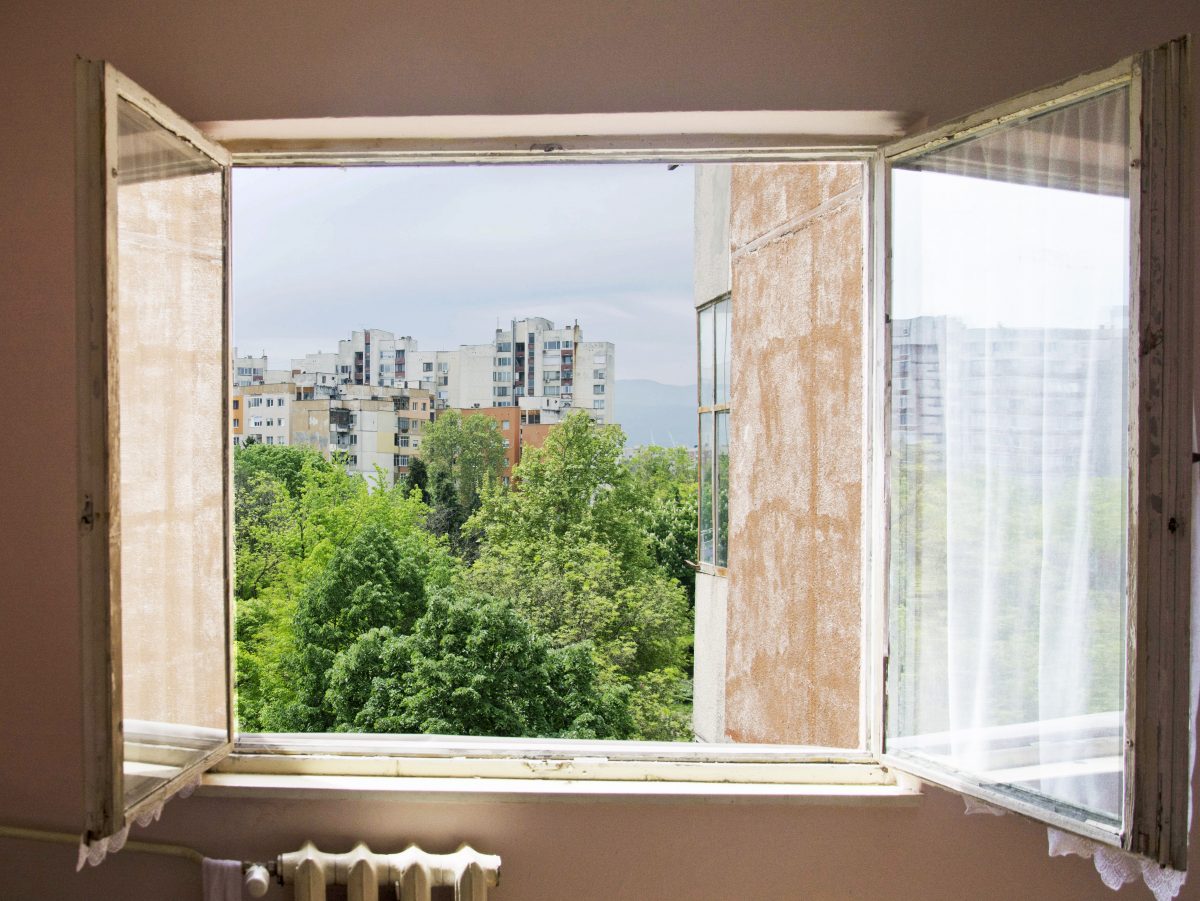Exhibition
Exploring the transformations of the neighbourhood of Trakiya
30% of the population of Bulgaria lives in panelki. Constructed en masse, the concrete residences gained a reputation for monotony and lifelessness. The neighbourhood of Trakiya, designed in the 1970s, attempted to differentiate. The architects experimented based on their ideas of social living, stepping the blocks, and placing them in organic configurations to create contrast and a sense of individuality. The inhabitants moved in eagerly, carrying with them their own ideas of living. The small apartment boxes were quickly filled, and the transformations seeped beyond their walls. The balconies pushed out and were glazed in, becoming kitchens, kids rooms and bedrooms, layering them with sun blocking fabrics, foils, lace, solar panels and parasols. The facades started reading like a patchwork, as the people living within expressed themselves. Around the blocks, neighbours planted gardens together and built structures for gathering with any materials they could find. Moving throughout the neighbourhood, they forged their own paths diverting from the planned sidewalks and walking through the meadows. In the course of the 40 years of its existence the residents significantly altered the original spaces of Trakiya. Led by ideas of ownership, individuality and the changing needs of everyday life they created, and continue to create their own living spaces.
“LIVING SPACES” uses the neighbourhood of Trakiya as a case study, presenting the coexisting work of architects and inhabitants as equally valuable. The exhibition unfolds the processes of design and adaptation, overlapping them to reveal a new perspective of how we understand housing.
Organised from the individual apartment to the urban plan, the progression through the exhibition is the way in which an inhabitant experiences the neighbourhood everyday. Inside to outside – exactly the opposite of how an architect typically approaches the design of such a neighbourhood – from outside to inside. As a living laboratory, the exhibition provides an interactive opportunity to review how we can learn from the creative processes that continue to shape Trakiya.
Opening on 30.09 at 19:30. Entrance, free.
Curator: Megan Lueneburg
research coordinator: Nina Toleva
production: Ivan Ivanov
photographer: Lina Krivoshieva
drone pictures: skyviewu.com
interns: Gergana Ganchovska, Simeon Malinov, Velin Kirov, Marina Zheleva, Madeleine Dimitrova, Gergana Georgieva, Ivan Bozhilov
research: Meglena Zlatkova, Svetoslav Slavov, Galya Balezdrova, Vildan Murad, Zhenya Ivanova, Ivelina Todorova, Gergana Marks, Gabriela Merdzhanova, Georgi Stavrev, Lyuba Pekyanska, Dona Slavova, Iva Georgieva, Vasil Dragomanski, Nazmie Ramadan, Kalbie Ramadan, Bono Nonchev, Dona Pickard
Zornitsa Yuliyanova, Angel Bondov, Constantine Dimitrov, Alexandra Shopova, Janet Dimitrova, Radoslav Stilijanov, Viktoria Drehemova, Nikolai Demirov, Elitsa Yaneva, Teodora Ninova, Angel Mitkov, Nadezhda Gantcheva, Todor Galev, Martin Lazarov, Phillip Zimmermann, Tina Nikolova, Wiktor Nowak, Alexandra Chausheva, Ali Marjok, Borislav Davidov, Valeriya Doneva, Vladimir Boyadzhiev, Dilyana Borisova, Dimitar Sirakov, Ekaterina Tsoneva, Ivan Grochev, Ivelina Ilieva, Krastyu Krastev, Lenko Vatev, Martin Ivanov, Nedimira Kalacheva, Petya Serafimova, Rumyana Mechkarska, Sanya Miteva, Simeon Kehayov, Stefani Mihova, Suat Syuleiman, Todor Cholakov, Hristiana Sabeva, Dobrin Keresteliev
resources research: Ventsislav Vasilev, Petar Kisyov, Ivo Hlebarov, Polina Hristova
“Do you know the architect?” film: Veselin Donchev, Veselinа Pandzharova, Vili Raeva, Antoаneta Topalova, Alexander Pеtrovich, Stoicho Marinov
foreign cases: Tinatin Gurgenidze, Krassimir Terziev, Daniel Kötter, Florian Faurisson, Signe-Sophie Boeggild, Zara Pfeifer

